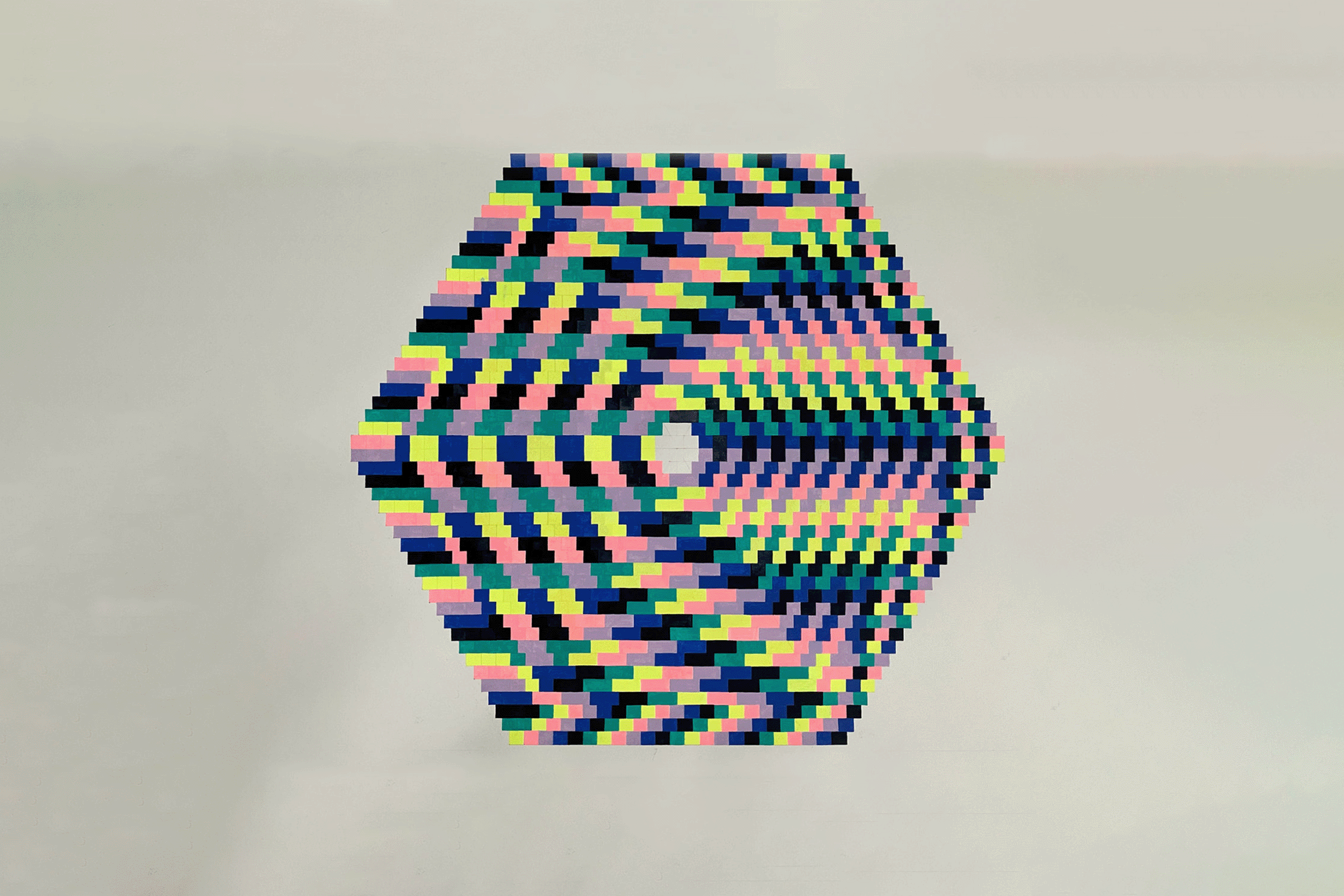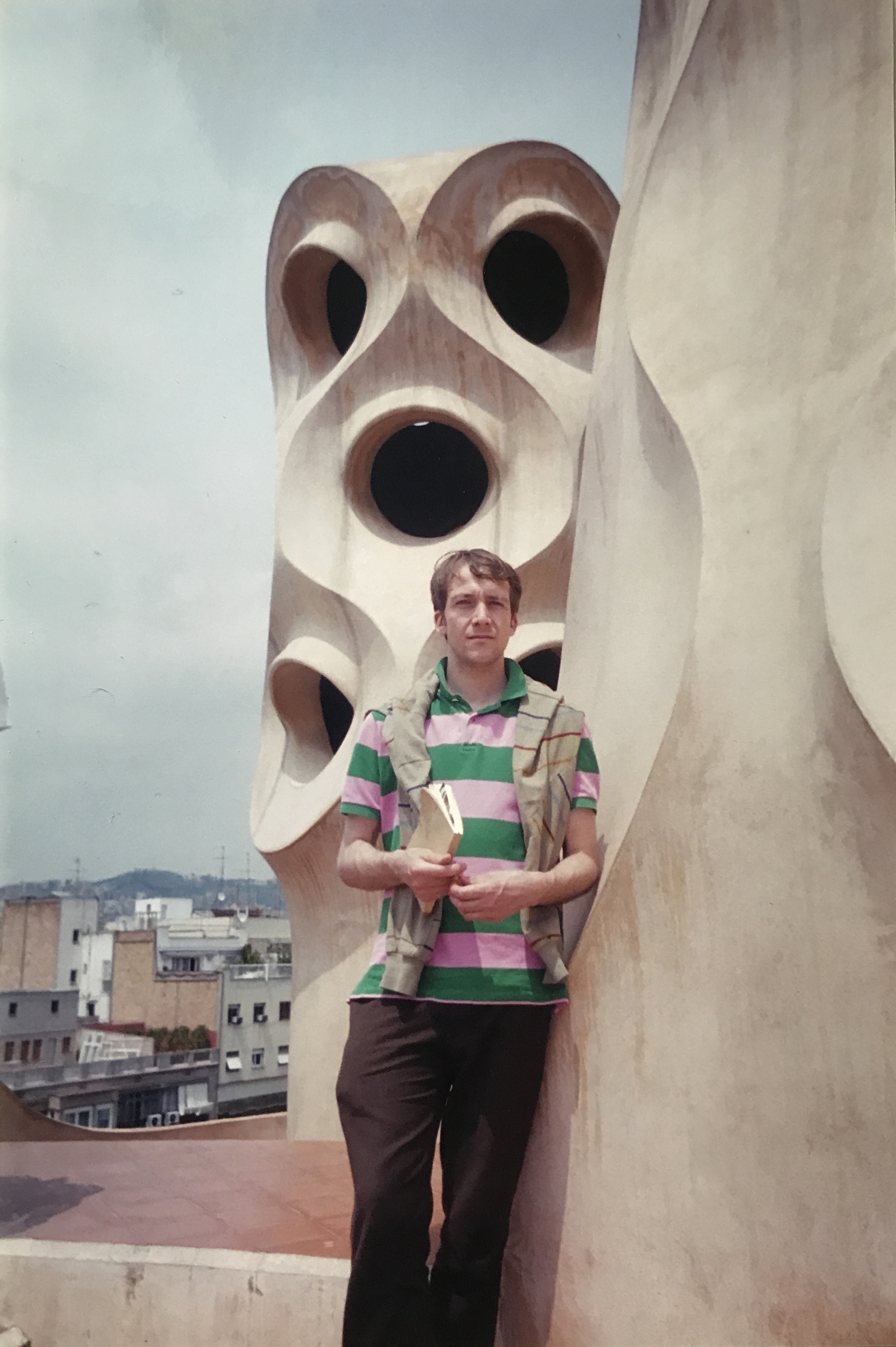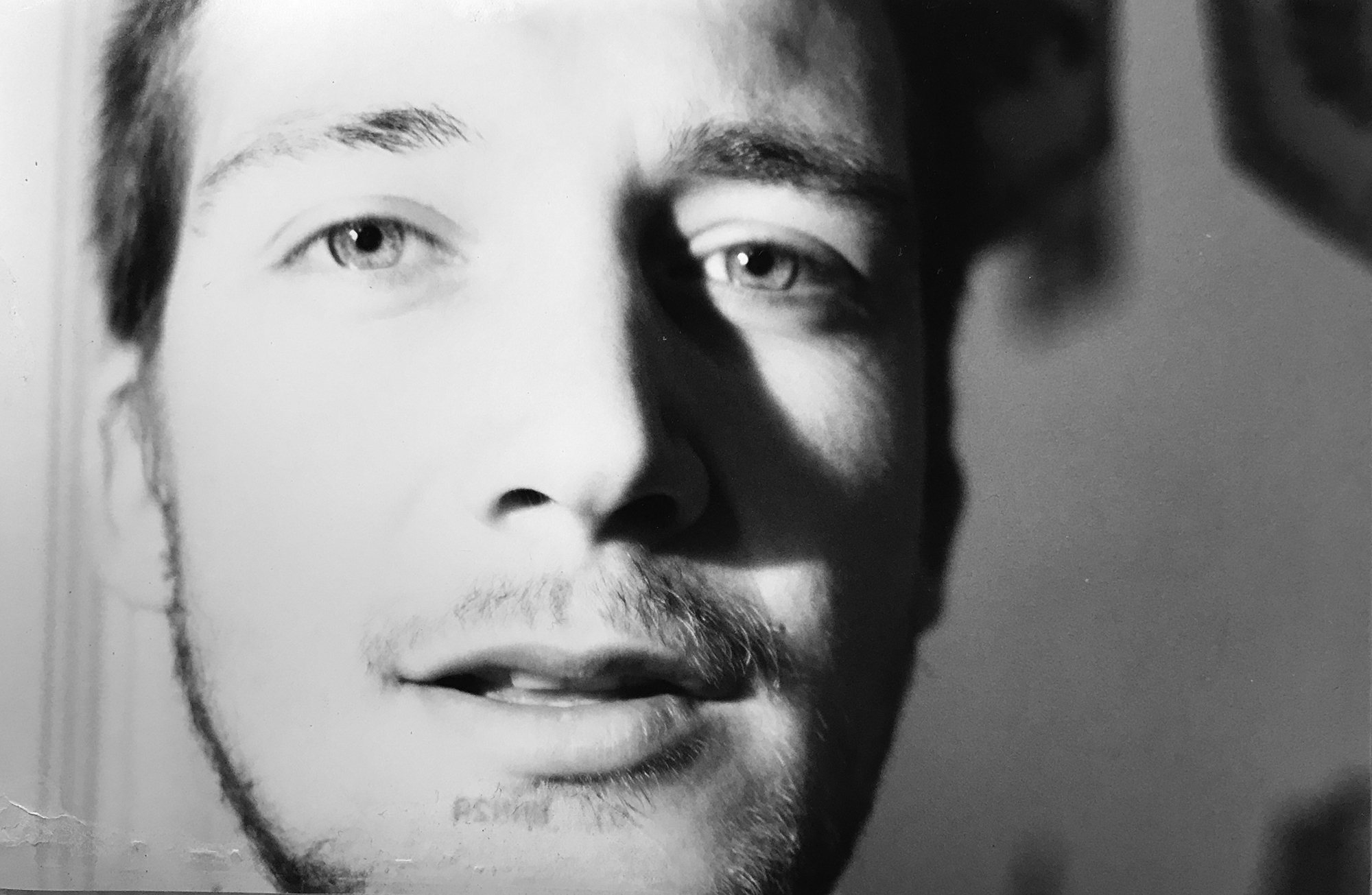 ARTISTS
ARTISTS
Jeremy Dower's lost era of ambient techno & electronica resurfaces
Martyn Pepperell dives into the enduring legacy of an artist who embodies the otherworldly nature of technology in everything he does.
In 1982, the Commodore International electronics company introduced the best-selling desktop computer of all time: the Commodore 64 (C64). A low-cost 8-bit PC, it came with a bulky CRT monitor and used data cassettes and floppy disks to load software and games. For several generations, the C64 was a transformative doorway into digital worlds. Reflecting on his childhood, the cult Australian visual artist and musician Jeremy Dower has vivid memories of its luminescent colours. It’s easy to imagine these retrofuturist recollections haunting the source code of his forthcoming compilation album, Personal Computer Music, 1997-2022, due for release on November 14 2025, through the influential Australian record label, Chapter Music.
Building on recent digital reissues of Dower’s early 2000s classics, Sentimental Dance Music For Couples (2000) and Music for the Young and the Restless (2004), Personal Computer Music, 1997-2022 collects eleven unreleased tracks from his archives. Spanning a quarter of a century, the compilation showcases his unpronounceable ambient dub techno project Tetrphnm, as well as the playful MIDI jazz and pixelated lounge music he made under his own name.
Despite the impact the C64 had on him, Dower’s creativity arose from a larger web of influences than a few blocky, one-colour sprites flickering across a video monitor. Growing up outside of Bendigo, a former gold-rush town on Dja Dja Wurrung land, just two hours northwest of Naarm, he began learning drums with a jazz tutor, before playing in several adolescent rock bands. Eventually, Dower developed an interest in folk music and entertained himself in the countryside by playing acoustic guitar, mandolin, and button accordion, and by experimenting with a Tascam 4-track recorder.
Alongside music, he was drawn to visual art and intuitively knew it would be his chosen career path in adulthood. The art books at the local library were a decade out of date, but he was able to visit the progressive Bendigo Art Gallery. On a school trip, Dower was enthralled with ‘Zappo Head’ (1987), by the late Australian abstract artist Howard Arkley, “It was a large spray-painted mask-like face on a fluorescent orange background,” he remembers. During his lifetime, Arkley abstracted suburban Australia into dreamy, psychedelic shapes. There’s something about his ability to conjure up new, hyperreal versions of existing realities that foreshadowed where Dower’s music would take him.
In 1993, the idiosyncratic British musician Richard D. James (better known as Aphex Twin) released Surfing on Sine Waves, his first and only album under the Polygon Window alias. When Dower heard its man/machine beatscapes, his worldview shifted.“That album really affected me, and set my creative imagination off in a new direction,” he reveals.
Dower quickly became obsessed with IDM, bleep, techno, and electronica acts such as Autechre, FSOL, Orbital, The Orb and LFO, as well as Warp Records’ canonical Artificial Intelligence compilations. In the wake of these revelatory encounters, he began making music with a desktop computer and some inexpensive hardware. It wasn’t the most professional set-up, but with what it unlocked in his mind’s eye, he was always going to make it work.
“Part of what attracted me to electronic music was that the aesthetic images it generated in my imagination were disconnected from a physical source or place,” Dower explains. “When I listened to band recordings, I always pictured people playing instruments, to an audience, which I honestly had little interest in. When I listened to electronic music, I was transported to other ‘virtual environments’. The images and moods were more abstract and non-determinate.”
Ultimately, synthesised sounds held far more potential for him as a listener and an artist. As Naarm record collector and PBS FM broadcaster Henry Guala observes, part of the charm of Dower’s music lies in its ability to evoke the feeling of moving through a landscape. “Even as the tracks get more intricate or complicated, he’s always preserving that playful spirit and maintaining a kind of breathing room for the listener, which is one of the things that I find most interesting about his works,” he explains.

By the mid-1990s, Dower had moved to Naarm to study Fine Arts (with a focus on painting) at the Victorian College of the Arts. “Rent was cheap, and there were many old buildings that were used for studio spaces, squats and parties,” he enthuses. “The old red-brick warehouses around the inner city used to have an air of creative potential; in my imagination, at least.”
At art school, he threw himself into painting. Over time, making music outside of class hours became a priority. Dower built a collection of samplers and synthesisers, and even performed at a few house parties. “I wasn’t really active in a public sense until after I graduated from art school, at which point music became my primary focus,” he continues. Looking back, he realises that moment represented his first major flip from one creative stream to another.
Despite the inspiration Dower felt, he was musically isolated. Thanks to community radio, magazines and record stores, he knew about the UK and Europe underground. However, given the geographic and cultural distance, those movements were literally and figuratively half a world away from him. At home, the situation wasn’t much better. He could see the outlines of Naarm’s counterculture through techno-and trance-oriented labels like Psy-Harmonics, but he was very much in his own world. “I was happy just recording by myself in my bedroom studio,” he says.
Things changed after he started sending demos out. While ruminating on how electronic music helped him visualise new realities, he settled on the Tetrphnm alias. ‘When I was first looking for a name, I really wanted a word that did not reference any other existing thing directly,” he says. “I just wanted it to be a sound, or visual symbol, referring to the aesthetics of other things only in the most abstract way.”
Dower’s first real connection with like-minded music makers came via the Naarm techno artist Voiteck Andersen, aka Voiteck. Known for performing live with a hardware rig, Andersen was also a prolific recording artist who regularly released sci-fi slanted 12” singles and albums under his Voiteck, TD5, and Klonker Clické aliases during the 1990s. “We had a few really good conversations, and he was very supportive,” he says.
Before the decade ended, Dower found a community through the national electronic arts collective and label, Clan Analogue. Emerging from the Sydney fringe, they helped popularise digital culture in Australia. He also befriended the sound designer David J. Franzke, aka DJ Hok, who was running the Rancho Relaxo event upstairs at The Lounge bar and nightclub in the CBD. Later, Dower and Franzke recorded together as Tet et Hok.

“Eventually, I was embraced by a scene that might be loosely described as post-rock,” Dower remembers. “I performed with groups like Architecture In Helsinki, who still had the full brass section and clarinet.” Amid the rise of Daft Punk and Air, and an increasing local interest in drone, synth, and noise music, Dower and his new peers found common ground over open-eared record labels like Thrill Jockey and experimental acts such as Sam Prekop, Tortoise, and Mouse on Mars.
Live shows were a natural progression, but they posed as many questions as they answered. “Those gigs were a little strange for me,” he admits. At the time, audiences expected performers on stage playing instruments or singing, not a guy standing in front of a collection of blinking boxes. “It was an odd collision between rave chill-out and pub-music culture,” Dower continues. “People were very open-minded, generally, but that level of comprehension wasn’t always there.”
As he brought Tetrphnm to the stage, Dower’s sound took on a liminal shape inspired by the DJ scenes fermenting in Berlin, Manchester and Sheffield. Later, he found himself wrangling his sprawling, often “deliberately featureless” techno explorations into short songs with pop-leaning structures and catchy melodic hooks. On reflection, he suspects it was a response to the audiences he was playing to and a shift in his listening palette. “At the time, I was also listening to a lot of [the American jazz saxophonist] Stan Getz’s recordings with [the Brazilian musicians] João Gilberto and Antonio Carlos Jobim.”
After encouragement from Voiteck, Dower submitted a demo to the Los Angeles-based experimental electronica label Plug Research, which went on to release influential records by Dntel, Daedelus, Flying Lotus, Shafiq Husayn, and Bilal in the 2000s and 2010s.
Initially, they were receptive to his Tetrphnm material. When he sent them a CD-R of synthesised reimaginings of the conventions of cool jazz and bossa nova, the focus shifted. Dower had arrived in a landscape where the ghosts of lounge, exotica, and muzak haunted previously unexplored virtual realities. In this digital simulacra of the past, he found something new.
In 2000, Plug Research issued his debut, Sentimental Dance Music For Couples, to a worldwide audience. At the time, they invited him to the US to play shows in support of Sentimental Dance Music For Couples. Although he couldn’t make it work, he still wonders what might have been. Regardless, the album quietly resonated with listeners who stumbled upon it in record stores, developing a rarefied reputation. Decades on, the music continues to captivate new listeners.
Recently, the online record store Boomkat, home to some of the best sales notes on the internet, noted that Sentimental Dance Music For Couples considers memory similarly to the English ambient musician James Leyland Kirby’s albums as The Caretaker. “Just like Kirby used lashings of reverb to smudge out traces of long-forgotten swing, Dower uses MIDI to create uneasy pseudo-mechanical versions of clapped-out bargain bin smoove jazz, twisting the edges just enough to keep us listening.”
Chapter Music bosses Guy Blackman and Ben O'Connor remember being amazed that music like this was flying under the radar in Naarm, while being released from Los Angeles. Although Dower didn’t head to the US, Sentimental Dance Music For Couples brought Blackman and O’Connor into his world. Two years later, they released his EP Music for Retirement Villages, Circa 2050 (2002).
Across Dower’s discography, there’s a recurring theme of utilitarian album titles that suggest prescriptive uses for the records. While he considers titles, much like album artwork, as an additional component that augments the aesthetic experience, he’s wary of the idea that they serve as a key to understanding the records. “For the most part, the process of recording and painting happens without any kind of linguistic component,” he explains. “It’s only later when it comes time to compile an album, or an exhibition, that I am asked to label things.”
During his Sentimental Dance Music For Couples and Music for Retirement Villages, Circa 2050 era, Dower worked in the video game industry as a visual artist. “It was a tumultuous time personally,” he admits. “In retrospect, I think I needed to get away.” After contemplating moving to Berlin or Cologne, he settled on Tokyo. “Guy and Ben, from Chapter Music, were there at the time, and I had another very close friend there,” he continues. Before he left Naarm, he wrote an album's worth of new material. “I took the recordings with me and compiled the album there,” he says.
Living in Japan was life-changing. “I learnt so much, and experienced so many new things,” Dower says. “My memory of the time feels greater than the two years I was actually there. I still maintain a connection with Japan.” There, he befriended the DJ and producer Sohei Tsurutani, aka Slowman, who signed his second album, Music for the Young & the Restless (2004), to his Bit of Heaven label and helped him play shows in Tokyo. “Later, we toured together to Europe, doing a series of gigs in Barcelona, Paris, and London,” he enthuses.
Dower worked as a freelance fashion illustrator and graphic designer in Japan. “By the end of my time there, my creative focus had shifted completely back to visual art and illustration,” he says. On reflection, he considers this to be his second major creative flip. “I think I was burnt out by the music industry,” he explains. “When I returned to Australia, I needed to make a living.”

Back home, he spent the next decade working in illustration and developing his visual art practice. Dower exhibited internationally, travelling to Berlin and New York for shows. “It was a good ride while it lasted, but [eventually], the illustration work started to become patchy,” he admits. “After my son was born, I felt I needed something more stable, so I started teaching at university. I had been interested in doing post-grad for a few years, but it wasn’t until I was in that ecosystem that it made sense.”
In 2015, Dower briefly soared into the pop culture stratosphere when a friend from the video game industry, Paul Robertson, invited him to compose the soundtracks for some animations he was making for Adult Swim. “The Simpsons were airing novel guest animations for the opening sequence,” Dower remembers. “Paul and [his friend] Ivan Dixon had the idea to make their own. They were confident it would get the studio's attention. I thought it sounded fun, so I made the music, not expecting too much.”
They created a pixel art version, accompanied by a 16-bit-style VGM rendition of the theme, and uploaded it online. Overnight, it went viral. “Three weeks later, we had a contract from Fox, who bought the animation from us,” Dower continues. After it aired, Dower was hired to work on music for the road-trip horror video game Dead Static Drive and a few other smaller projects.
Later that year, Dower also began a master's degree, which later evolved into his PhD thesis, ECCOWARE: Music as Virtual Aesthetic Environment (2020). Despite The Simpsons moment, he felt disillusioned with everything outside of his family life. “Looking back, I think I was suffering from some kind of depression,” he admits. In the past, his music and art had always felt underscored by optimism. Ground down by modern life and sleep deprivation, he couldn’t shake the feeling he’d had his day in the sun.
In that state of mind, Dower felt receptive to the vaporwave music he’d encountered: ECCOJAMS, Macintosh Plus, Mallsoft, etc. “It had a sense of doom running through it,” he reflects, thinking about the decentralised internet music and art movement that emerged online in the early 2010s. “Obsolete, discarded, and decaying fragments of popular culture that had been retrieved from the cultural dumpster and re-presented in their dilapidated, tainted state. In that way, it was really distinct from previous ‘retro’ movements, which were more like a positive restoration of the past. For me, it was more a perverse, ironic sense of nostalgia.”
As part of his PhD, Dower produced several vaporwave albums as Δελφοί for the DMT Tapes FL and power_lunch corporation labels. He also manufactured a set of miniature internet-art-inspired sculptures with embedded MP3 decoders or USB chips. By combining his experience with music production, graphic art, painting, printmaking, and 3D printing, he entered a 21st-century trans-disciplinary practice.
Ultimately, Dower found working within the conventions of vaporwave led him to a creative dead end. However, something else interesting happened. In 2018, the Australian DJs Andras and Sconce (formerly Instant Peterson) selected one of his Tetrphnm tracks for 3AM Spares, a double LP reissue compilation for the Efficient Space label. “It was a revelation for me,” Dower says, noting his surprise that (A) there were still physical traces of his work out there in the world and (B) he’d been selected alongside so much other amazing music to represent a historical document of Australia’s underground 1990s techno scene.

Today, Dower credits the experience with helping him reassess his music in a positive light. He also feels it laid the foundations for Chapter Music to digitally reissue his Jeremy Dower albums and work with him on Personal Computer Music, 1997-2022. “We spent six months selecting recordings from a large archive,” he says. Piecing it all together was a complicated puzzle, but it was very rewarding.”
Recently, Dower moved back to Bendigo. It’s a different place, larger and more cosmopolitan than he remembers, but still full of grand old buildings and beautiful public parks. Now, there’s a second visual arts facility, the La Trobe Art Institute, across the road from the Bendigo Art Gallery. Ten minutes' drive away in Eaglehawk, the Trash Cult book, records, and films store regularly hosts performances from visiting experimental musicians. Dower spent his childhood in that suburb. Back then, there was nothing but a fish’n’chip shop and a news agency there. “I never imagined it would change,” he reflects.
Dower’s music is changing as well. He’s been recording again, searching for new ways to explore old ideas. He’s still working with the same aesthetic source code, but what it compiles into this time remains to be seen.
“There wouldn’t be much point in emulating the old music, nor would it really be possible,” he says. “It’s a different world now.”
-
Martyn Pepperell is a freelance journalist, copywriter, broadcaster, photographer and DJ. Find him on Instagram.


